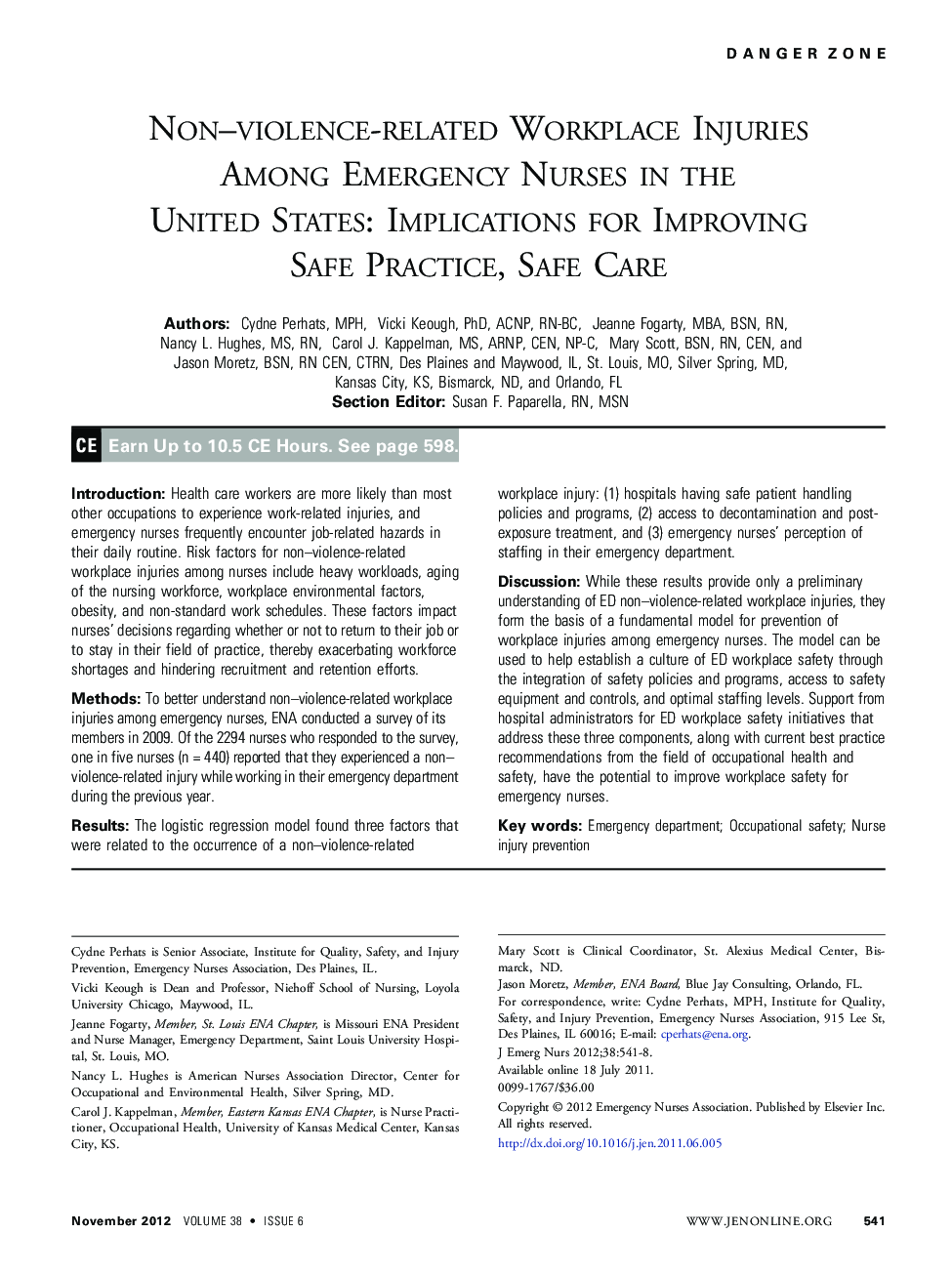| Article ID | Journal | Published Year | Pages | File Type |
|---|---|---|---|---|
| 2610529 | Journal of Emergency Nursing | 2012 | 8 Pages |
IntroductionHealth care workers are more likely than most other occupations to experience work-related injuries, and emergency nurses frequently encounter job-related hazards in their daily routine. Risk factors for non–violence-related workplace injuries among nurses include heavy workloads, aging of the nursing workforce, workplace environmental factors, obesity, and non-standard work schedules. These factors impact nurses’ decisions regarding whether or not to return to their job or to stay in their field of practice, thereby exacerbating workforce shortages and hindering recruitment and retention efforts.MethodsTo better understand non–violence-related workplace injuries among emergency nurses, ENA conducted a survey of its members in 2009. Of the 2294 nurses who responded to the survey, one in five nurses (n = 440) reported that they experienced a non–violence-related injury while working in their emergency department during the previous year.ResultsThe logistic regression model found three factors that were related to the occurrence of a non–violence-related workplace injury: (1) hospitals having safe patient handling policies and programs, (2) access to decontamination and post-exposure treatment, and (3) emergency nurses’ perception of staffing in their emergency department.DiscussionWhile these results provide only a preliminary understanding of ED non–violence-related workplace injuries, they form the basis of a fundamental model for prevention of workplace injuries among emergency nurses. The model can be used to help establish a culture of ED workplace safety through the integration of safety policies and programs, access to safety equipment and controls, and optimal staffing levels. Support from hospital administrators for ED workplace safety initiatives that address these three components, along with current best practice recommendations from the field of occupational health and safety, have the potential to improve workplace safety for emergency nurses.
